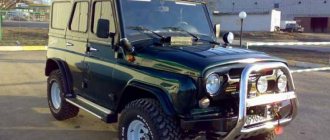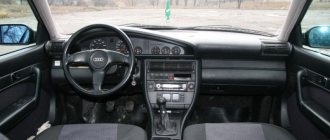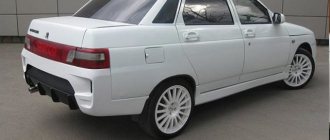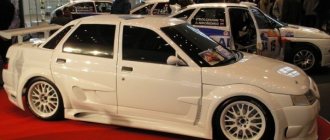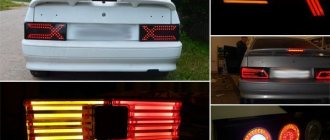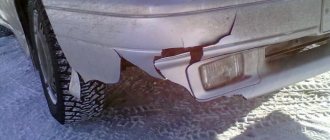The Honda Civic belongs to the small middle class cars; it saw extreme changes in 2012, and now the eighth generation of this model is available to all car enthusiasts. Manufacturers promise the imminent release of the ninth model, but what does the eighth version of the Honda Civic offer us?
Honda Civic 4D can have both front-wheel drive and all-wheel drive, with a coupe, sedan or hatchback style body. Engine options can be 1.4 or 1.8 liters with a manual or automatic gearbox.
Benefits of car tuning
Having driven such a unit for some time, we feel like we miss installing a new aerodynamic body kit, rims and improved tires, spoiler, optics and other accessories that are simply necessary for the Civic 4D. The car has always looked stylish, temperamental and dynamic, now the elegant sedan, after tuning, will look even more luxurious and powerful. It’s not for nothing that Civic supports the brand of the legendary car.
The tuning elements were chosen extremely carefully; they had to look exclusive, like the Honda Civic itself. Car enthusiasts are offered a choice of tuning the Honda Civic 4D by installing mudguards, window deflectors, radiator grille and bumper covers, installing roof rails on the car, winches, rear and front view cameras, as well as a GPS navigator. Actually, we added all the same elements when we tuned the body of the Audi 100 - be sure to compare.
Ordering a Honda Civic 4 tuning now is not difficult. All you need is to have some money, and a good supplier will find you. The supplier will do everything to ensure that your car has a perfect appearance both outside and inside; he will also do the installation himself. By tuning the Honda Civic 4, you will get a different car, more powerful, perfect in aesthetics and operation. Tuning significantly saves money than buying a new modern car model.
Civic 4D tuning parts
Rear bumper INGS EXRTEEM for Honda Civic 4D
Contents: Rear bumper Manufacturing material: High-quality fiberglass. Method..
11000 rub.
Mugen hood for Honda Civic 4D
Contents: HoodMaterial of manufacture: High-quality fiberglassInstallation method: &nb..
16500 rub.
Rear window visor for Honda civic 4D
Contents: VisorMaterial of manufacture: ABS plasticInstallation method: double-sided..
2600 rub.
Lip spoiler for Honda Civic 4D
Contents: SpoilerMaterial of manufacture: ABS plasticInstallation method: double-sided..
2600 rub.
Front bumper INGS EXTREEM for Honda Civic 4D
Contents: Front bumper Material: High-quality fiberglass..
11000 rub.
ABS plastic mesh (900*440)
Contents: ABS mesh 900*440 Manufacturing material: ABS plastic Installation method: Universal..
1500 rub.
ABS plastic mesh Bentley style (1125*485)
Contents: ABS mesh 1125*485 Manufacturing material: ABS plastic Installation method: Uni..
1900 rub.
Thresholds INGS EXTREEM for Honda Civic 4D
Contents: Set of thresholds (2 pcs.) Material: High-quality fiberglass Sp..
9700 rub.
Mugen sills for Honda Civic 4D
Contents: Set of thresholds (2 pcs.) Material of manufacture: ABS plastic Installation method: ..
3700 rub.
Front bumper splitters INGS EXTREEM for Honda Civic 4D
Contents: Set of dividers (2 pcs.) Manufacturing material: High-quality fiberglass..
2600 rub.
Eyelashes for headlights for Honda Civic 4D (narrow) (2006-2012)
Contents: Set of eyelashes (2 pcs.) Manufacturing material: ABS plastic Installation method: ..
800 rub.
Eyelashes for headlights for Honda civic 4D (curly) (2006-2012)
Contents: Set of eyelashes (2 pcs.) Manufacturing material: ABS plastic Installation method: ..
1000 rub.
Mugen radiator grille for Honda Civic 4D (2009 - )
Contents: Radiator grille + meshMaterial of manufacture: ABS plasticInstallation method:&nbs..
3300 rub.
Radiator grille for Honda Civic 4D (2007 - )
Contents: Radiator grille + meshMaterial of manufacture: ABS plasticInstallation method:&nbs..
3000 rub.
Spoiler Modulo for Honda Civic 4D
Contents: SpoilerMaterial of manufacture: High-quality fiberglassInstallation method: &..
3950 rub.
- 1
- >
- >|
Showing 1 to 15 of 21 (total 2 pages)
What and how to tune?
Let's start tuning the car. Pay attention to the body kits of the Honda Civic. By installing reliable aerodynamic body kits, you can significantly transform the car, making it more aggressive and sporty. The car has always been famous for its efficiency in fuel consumption; even when traveling along a city route, aerodynamic body kits were installed to emphasize this feature. In addition to appearance, the body kit can reduce drag by redirecting air flow. This feature will have a positive effect on the car’s handling, especially at high speeds.
The body kits are made of durable, high-quality plastic; there are plenty of options to choose from in dealer networks. In addition to the aerodynamic body kit, front and rear spoilers, bumper covers and radiator grilles are installed. By installing front optics, you can radically change the appearance of the car. In order to emphasize the tuning of the Honda Civic 4, linings are installed on the wheel arches. Below you can see one of the Honda Civic 4D tuning photos .
Installing a skirt and sills improves aerodynamic resistance and affects the acceleration of the car. The products are made of polypropylene, which is superior to plastic in strength, stability and elasticity, regardless of temperature. The devices are installed without adhesive tape and sealants, but using metal fasteners.
By installing a rear bumper, you will not only change the appearance of the car for the better, but also improve its technical characteristics, thereby making the Honda Civic 4 even more unique. For improved aerodynamics, do not forget to install a spoiler on the trunk of the car; it will reduce the formation of vortices that slow down the car and which load the rear axle.
Alternative headlight optics with halogen lighting will significantly affect the external style of the car. If desired, you can install even brighter xenon headlights. One of the popular kits is the Civic Eagle Eyes optics, which look like neon glowing rings around the lenses. The lamps are based on a cold cathode, which makes them durable and more economical than alternative light sources. By installing a lower LED strip, you can emphasize the bend of the headlight profile, and, if desired, use the element as daytime lighting.
Fog lights can decorate your car and increase safety on the road, especially when visibility is poor. The rear headlights are also being changed to be more powerful and reliable, while improving visibility to other cars. The taillights of the Smoke&Black model, unlike standard lamps, are not red.
The behavior of the Honda Civic 4 on the road significantly depends on the condition of the suspension. This part is the connecting element of the body with the road surface. By tuning the suspension using DGR coilovers, you can get improved handling, vehicle acceleration, braking quality and passenger comfort in the cabin. Such a part will work stably and last a long time.
By changing the external characteristics of the car, you will emphasize your own taste and will always stand out among the masses of other gray cars. The car will always look original and memorable.
And from this test drive of a Honda Civic, you can find out which parts are worth upgrading and how best to do it:
You can also read on this topic:
Tuning a Honda Civic with your own hands without much difficulty
The car exhaust system allows you to get rid of exhaust gases
The Japanese have launched mass production of the new-generation Mazda CX-5 crossover
Frame SUVs are reliable and large
New cars under 1,000,000 rubles for crossover lovers
Share on social networks
Alexander Stepanoff June 17, 2014
Published in: Useful tips and car devices, Japanese cars
Tags: Honda, Beautiful, Executive, sedan, Tuning, Tuning of foreign cars, Japanese cars
Tuning the latest generation Honda Civic Type R
In matters of art and design, fashion and architecture, there is a constant struggle for unconditional superiority between two aesthetic directions. In one corner of the ring is minimalism, a supporter of pure fundamentals, constant harmony, elevating the credo that more is in less. In the opposite corner is maximalism, the source of carefully thought-out solutions, bold details, the ideal embodiment of the idea that more is better. In the center are the creator and the leader, the designer and the builder, who is forced to choose between these two and spend his time searching for a compromise. Yes, that is the creative process, the endless search for a solution, and the reason why so many unemployed artists wander around Williamsburg, Brooklyn and Silverlake in Los Angeles, looking for inspiration. And this is also why so few of them achieve recognition in the field of art. People need harmony. Fortunately, we have car tuning for this.In tuning it is rarely possible to successfully combine minimalism and maximalism. Although for successful movement forward it is necessary to achieve a competent combination of these two aesthetic directions. Feel's Honda Civic Type R is a classic example of how the harmonious combination of two opposing directions is richly rewarded, and not with some plastic trophy or misspelled nameplate. His reward was world recognition, well-deserved victories and coveted respect. This Civic is in many ways a moving dichotomy of more in less and more in more. He pulls and pushes in two different directions at the same time, but does so in such a balanced way that we, as outside observers, have difficulty determining it.
But to fully understand the well-known method, we need to unpack the ingenuity of the technique and the rich history of Feel's, the famous Japanese workshop specializing exclusively in Honda cars. Founded in 1983, Feel's (better known in the east as the Honda Twin Cam) developed and distributed aftermarket parts that desperate Honda enthusiasts were after. Since the craftsmen themselves were fans of Honda, they understood that a company that produces after-market products for cars of one brand always achieves the best results and achieves high quality products. This model is borrowed from the restaurant business, where the worst establishments are those that lack a clear strategy and engage in mass service. There are a lot of such places: sushi bars and Chinese restaurants, Mexican and oriental restaurants. This approach makes no sense and, according to the founders of Feel's, the same fate befalls tuning studios that take on everything.
In 1985, the company began intensively honing its technical skills. They refined in-house components for better performance on Hondas on the race track, with weight, reliability and power being the focus. Since then, Feel's has grown from a small workshop into a large company with a whole network of auto stores in Tokyo, Yokohama and Saitama. They sell modified entire engines, control units, engine parts, cooling system components, exhaust systems, coilovers and body kits. Recently, due to increased demand in the US market, they imported the American Civic Si coupe to Japan and developed the body kit, exhaust and suspension system for this model. Unfortunately, the company has no plans for a large-scale invasion of the American market. All that remains for us is to admire her projects, which cause real hysterics in Japan, the echoes of which sometimes reach our shores.
Take a look at their Civic Type R. The first signs of mini-maximalism are already found in the exterior. The car has bold shapes, clear body lines, chiseled curves and lean sides - this is a real car for the ring. The impersonal white color does not complicate anything, the strict, highlighted optics complement this image, and everything together seems to pretend to be factory-made. But once you break that look down into its components, you discover that this Civic is more than just shapes and paint. Every inch of its bodywork has been modified or replaced with a Feel's equivalent. The front bumper, carbon fiber hood and trunk lid, rear diffuser, flared front arches, front semi-spoiler, lightweight door panels, sporty headlight lines, side air vents, acrylic glass instead of conventional glass in the doors and a carbon wing are all aimed at reducing weight, widening the body and improved ventilation of the factory chassis. Add in the spot welding of the factory seams, and the Civic Type R suddenly becomes a weightless (980 kg) embodiment of functionality.
Under the hood, mini-maximalism is also present in full. The K20A engine was bored out from 1,998 to 2,353 cc. Inside are TODA pistons, making the most of the extra volume in the combustion chambers provided by the 0.6mm TODA cylinder head gasket. The Feel's aluminum radiator, ECU and cams complement their super-sexy custom throttle body. A very modest set of after-market components provides an impressive 296 hp. at 7,500 rpm. The chassis features Feel's coilovers in tandem with Swift springs at the front and Eibach springs at the rear. A discreet set of 18-inch two-piece six-spoke AME TM-02 wheels strike a balance of weight, strength and design. The interior is completely disassembled except for the Nardi steering wheel, Takata seat belts and a set of Defi gauges. On paper the project looks simple, but in reality it is complex.
This success, combined with the minimal and the excessive, ensured the Civic Type R Feel's fastest lap time (1 minute exactly) in the class of naturally aspirated front-wheel drive cars on the famous Tsukuba Circuit, a standard that all tuners strive for. This lesson teaches not only the desire for balance, but also answers where to stop when choosing between the scale and excellence of experience.
In matters of style and design, power and aerodynamics, there will always be a split between minimalism and maximalism, a struggle between simplicity and excess. But with the proper experience and knowledge, you can find a way to unite the two warring extremes. Let's hope that this Civic Type R, rushing towards aesthetic nirvana, is proof that compromise will be found in this struggle.

